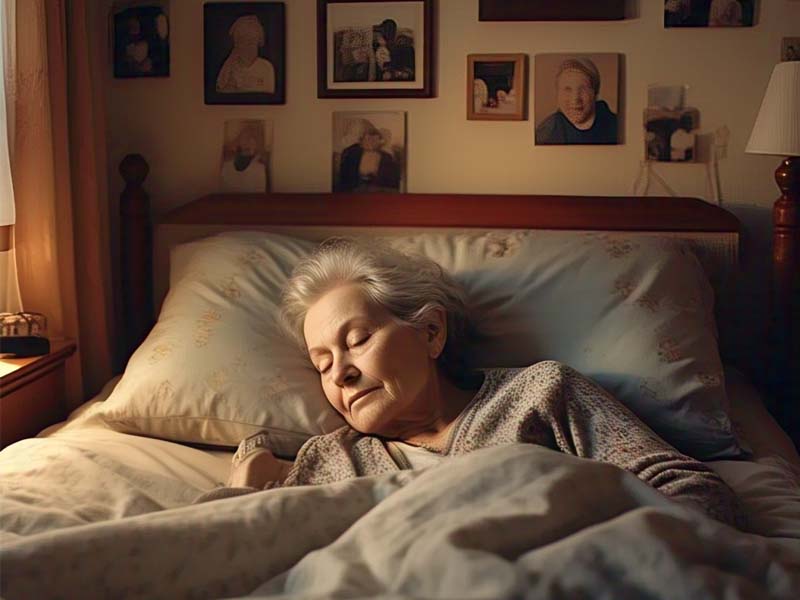
Elmsleep – The Elderly and Sleep have a complex relationship that changes over time. As people age, they often experience difficulties in falling asleep, staying asleep, or achieving restful sleep. Insomnia, a common sleep disorder, is characterized by difficulty initiating or maintaining sleep despite having the opportunity to do so. This can lead to excessive daytime sleepiness, cognitive impairments, and an overall decline in quality of life.
Individuals aged 60 and above are more susceptible to sleep disorders due to a combination of medical, psychological, and environmental factors. Chronic illnesses such as arthritis, heart disease, and respiratory conditions can contribute to discomfort that disrupts sleep. Additionally, mental health conditions like anxiety and depression often lead to insomnia. Physiological changes in the sleep cycle also play a role older adults tend to have lighter sleep, wake up more frequently at night, and experience a shift in their circadian rhythm, causing them to feel sleepy earlier in the evening and wake up earlier in the morning.
The Elderly and Sleep disturbances are closely linked to various disorders beyond insomnia. Sleep-disordered breathing, including sleep apnea, affects many older adults and leads to frequent nighttime awakenings. Restless Legs Syndrome (RLS) is another condition that causes an irresistible urge to move the legs, especially at night, making it difficult to fall asleep.
“Guest Posting: Earn Quality Backlinks”
Medications taken for age-related health conditions can also contribute to sleep disruptions. Certain drugs prescribed for high blood pressure, depression, or chronic pain have side effects that interfere with sleep patterns. Furthermore, environmental factors such as noise sensitivity and temperature fluctuations in the bedroom can negatively impact sleep quality.
Despite these challenges, several strategies can help improve sleep quality among older adults. Maintaining a consistent sleep schedule is essential going to bed and waking up at the same time every day, even on weekends, helps regulate the body’s internal clock. Limiting daytime naps, especially in the late afternoon, can also prevent nighttime sleep disturbances.
Establishing a bedtime routine that promotes relaxation can be beneficial. Activities such as reading a book, listening to calming music, or practicing deep breathing exercises can signal the body that it is time to rest. Avoiding screen time at least 30–60 minutes before bed is crucial, as the blue light emitted by electronic devices suppresses melatonin production and delays sleep onset.
Creating an optimal sleep environment can also make a significant difference. A cool, quiet, and dark bedroom enhances sleep quality. Avoiding caffeine intake at least six hours before bedtime and engaging in regular physical activity while ensuring it is not too close to bedtime can further promote restful sleep.
If sleep problems persist despite these adjustments, consulting a healthcare provider is recommended. Persistent insomnia or other sleep disorders may require medical evaluation to determine underlying causes and appropriate treatments. By prioritizing good sleep hygiene and seeking medical advice when necessary, the elderly can enhance their overall health and well-being through improved sleep quality.
“Smart Locks: The Key to a Safer and Smarter Home”
